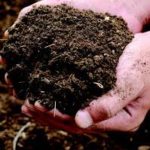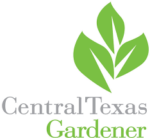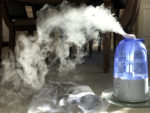January To-Dos

Add compost
January weather can be quite unpredictable. It’s not unusual to get a sudden warm day that tricks plants into emerging from dormancy. Be assured that it’s still winter. The average last frost day for the Austin area is February 25th according to the climate summary published by NOAA. Use this month to plan for the year, sharpen your tools, and catch up on weeding.
Check our lists below for both outdoor and indoor gardening to-dos.
Your January Outdoor Gardening Checklist |
|
FERTILIZE |
Send in separate soil samples (forms available here) for your lawn, ornamental beds, and vegetable garden. |
WATER |
Water everything well before a freeze, but avoid overwatering. |
TRANSPLANT |
Plant bare root and container-grown roses, shrubs, fruit and nut trees, groundcovers and vines. Start warm season vegetables like tomatoes and peppers indoors. Plant spring-flowering bulbs if you have not already. |
SOIL |
Add compost. Check winter mulch and replenish, if needed. Cut down the cover crop and turn them under or leave on top for mulch. |
LAWNS |
If lawn has a history of brown patch problems, treat with a labeled fungicide late in the month. Repeat treatment in three to four weeks, if needed. |
DISEASES/PESTS TO LOOK FOR |
Check for mealy bugs and scale on outdoor plants being overwintered in the greenhouse or garage. |
MAINTENANCE |
Cut back perennials and ornamental grasses that have died back from cold. Cut perennials two to four inches above the ground. For grasses, cut back to six to 10 inches. Clean and sharpen tools. Inspect garden hoses and replace as needed. |
IN THE VEGETABLE GARDEN |
Onion transplants should start appearing in the garden centers later in the month. Patty recommends ‘Texas Legend,’ ‘Texas Early White,’ ‘1015Y Texas Super Sweet,’ ‘Yellow Granex’ and ‘Southern Belle Red.’ Plant seeds of turnips, radishes, carrots, arugula, beets, kohlrabi, and peas directly into garden beds. Water as needed to keep soil moist and protect from frost if needed. Plant transplants of broccoli, cabbage, cauliflower, Swiss chard, collards, lettuce, spinach, Asian greens and artichokes. Cut back yellowed asparagus foliage. See the full Vegetable Garden Planting Guide (Español, 繁体中文) and Vegetable Varieties for Central Texas. |
Your January Indoor Gardening Checklist |
|
FERTILIZE |
Just like plants grown outdoors, houseplants rest in winter. If you aren’t seeing any new growth do not fertilize. Too much fertilizer during an inactive growth period could lead to an excess buildup of salts |
WATER |
Plants may require more frequent watering during this time due to supplemental or indoor heating. Monitor soil moisture by checking it more frequently and adjust watering schedule as needed. |
HUMIDITY |
Humidity may be low due to supplemental indoor heating. Increase humidity by adding a humidifier, grouping plants together or placing them on a pebble tray. If using the pebble tray method remember to keep the water below the pebbles in the tray. Some pots may wick water from the dish into the pot leading to overwatering and root rot. |
FOLIAGE CARE |
Dust leaves with a damp cloth using distilled water to remove debris and rotate plants to reduce leggy growth. |
DISEASES/PESTS TO LOOK FOR |
Inspect soil and leaves for pests. Fungus gnats may be present due to increased watering frequency. Remember to let the top few inches of soil dry out before watering to reduce the possibility of fungus gnats. |
MAINTENANCE |
Check the temperature if your plants are near a window, some plants can become damaged by temperatures below 40 degrees F. Remember to remove any dead, damaged or diseased leaves. This is an inactive growth period for many indoor plants. Removing spent leaves allows your plant to save valuable energy for new spring growth. See all our houseplants tips here. |
 As a contributor to Central Texas Gardener (CTG), Daphne Richards, County Extension Agent-Horticulture, answers questions and shares knowledge on new and tried & true plants for Central Texas. Check out some of our favorites for January!
As a contributor to Central Texas Gardener (CTG), Daphne Richards, County Extension Agent-Horticulture, answers questions and shares knowledge on new and tried & true plants for Central Texas. Check out some of our favorites for January!
 Plant cold hardiness|Daphne Richards|Central Texas Gardener
Plant cold hardiness|Daphne Richards|Central Texas Gardener
 Prune winter plants|Daphne Richards|Central Texas Gardener
Prune winter plants|Daphne Richards|Central Texas Gardener
 Winter bluebonnet tips|Daphne Richards|Central Texas Gardener
Winter bluebonnet tips|Daphne Richards|Central Texas Gardener
 Why plants freeze|Daphne Richards|Central Texas Gardener
Why plants freeze|Daphne Richards|Central Texas Gardener
Get Growing!
President Thomas Jefferson said “No occupation is so delightful to me as the culture of the earth, and no culture comparable to that of the garden.” This handy reference will help you pursue your own cultural delight and serve as a guide for what things to do in the garden each month: January, February, March, April, May, June, July, August, September, October, November, and December

